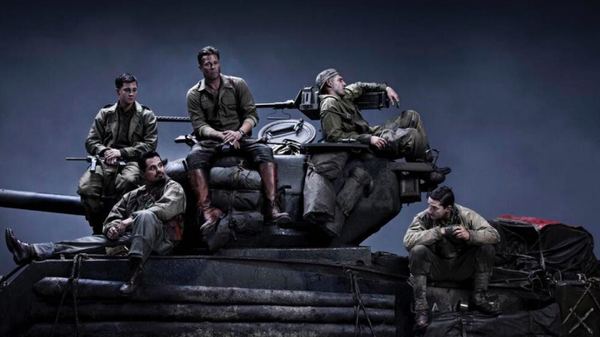Overview
Tanks have featured in countless war movies yet rarely been the focus of those films. Slow, hulking and claustrophobic, they lack the ‘glamour’ of planes, the scale of battleships and the vulnerability of the lone soldier. Two rare exceptions are 1943’s Sahara and 1988’s The Beast of War, both of which centred on lone tank crews bravely engaging the enemy against seemingly impossible odds.
In that vein, FURY is a fitting new addition. Set in the closing stages of the Second World War, a single US tank (baring the nickname from which the film takes its title), is tasked with holding a vital crossroads deep behind German lines. Its crew (Shia LeBeouf, Michael Peña and John Bernthal) is a hardened bunch of veterans dutifully falling under the command of 'Wardaddy' (Brad Pitt), and none of them take kindly to their new, fresh-faced draftee Norman (Logan Lerman) whose mobile armoured experience consists of knowing how to operate a typewriter.
Norman's initiation is quick and uncompromising. His first job is to wipe down the tank's interior and scrub away the fleshy remains of his predecessor. Then its straight into action, where the true horrors of the conflict are seen, felt and heard all around. One thing FURY does exceptionally well is demonstrating precisely how devastating a tank was to anything less than another one (unless that other one was the German ’Tiger’, whose forward-facing armour made it invulnerable to all US counterparts). “Ideals are peaceful”, explains Wardaddy, "history is violent”, and the sound of enemy shells tearing holes through the sky as they blaze past or into the American units is a terrifyingly violent experience.
Indeed, all the combat scenes in FURY are brutally graphic, offering a Saving Private Ryan level of gruesome reality to the war experience. Bodies are burned, shredded and liquified, yet what truly confronts is the matter-of-factness with which the other soldiers regard it all. This is the final stage of the conflict, remember, by which time most troops had experienced years of dehumanising savagery. “It’s just war!” one of them explains to Norman, whose revulsion to the death around him is neatly reflective of the audience’s.
If there’s a problem with FURY, it's Pitt’s character, Wardaddy. It’s not just that he’s unlikeable and almost impossibly calm under pressure, he’s also a war criminal. The Hague Conventions are blatantly ignored as he periodically executes POWs, including one particularly sadistic sequence used to familiarise Norman with killing. ‘Ideals are peaceful’, yes, but they’re also binding, and in what may well have been the last war fought for noble reasons, robbing your hero of his morality has a flow-on effect to the rest of the film. Corny jingoism has no place in the post-Private Ryan universe, and it’s good to see the darker side of the Allied war effort not being overlooked, but as the credits roll it’s hard not the feel like director David Ayer ultimately retreated from that position and allowed his star to reclaim a little bit of the Hollywood treatment.
Information
When
Thursday, October 23, 2014 - Sunday, November 23, 2014
Thursday, October 23 - Sunday, November 23, 2014
Where
Various cinemas in WellingtonWellington
Price
varies-
Event Type
